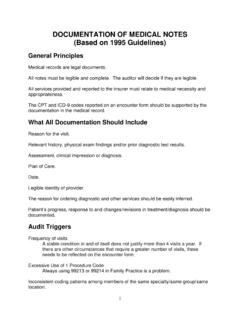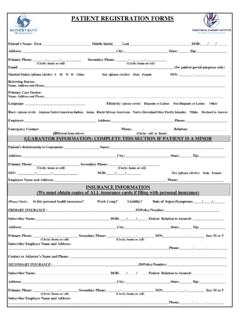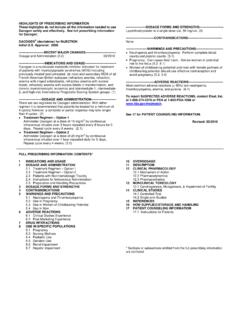Transcription of Approach to the Patient with Lymphadenopathy
1 Ymphadenopathy refers to one or more lymphnodes that are abnormal in size, consistency, ornumber. Lymphadenopathy can be due to abenign, self- limited process or may be a sign ofa serious underlying disease. Infections, malignancy,and immunologic disorders account for most cases oflymphadenopathy (Table 1). This article reviews thediagnostic Approach to the Patient with localized orgeneralized Lymphadenopathy and discusses common,important systemic illnesses that may cause OF LYMPHADENOPATHYKey factors to consider when evaluating a patientwith Lymphadenopathy include the age of the Patient ,location of the Lymphadenopathy , associated symp-toms, and the presence or absence of is the most important consideration because ithelps predict the likelihood of a benign versus malig-nant process.
2 In patients younger than 30 years, lymph-adenopathy is due to a benign underlying processapproximately 80% of the time, while in individualsolder than 50 years, it is due to a malignant processapproximately 60% of the second most important consideration is whetherthe Lymphadenopathy is localized or generalized (de-fined as detectable lymph nodes in 2 or more regions).In localized Lymphadenopathy , the lymphatic drainageareas should be investigated for infection or malignan-cy. Evaluation of the Patient with generalized lymph-adenopathy should include a careful history that focus-es on systemic signs and symptoms (eg, fever, chills,night sweats, weight loss, and pruritus),2a thoroughphysical examination, complete blood count, andchest radiograph.
3 In the adult Patient , especially thoseaged 50 years or older, generalized lymphadenopathyusually represents a serious systemic illness. Fever,weight loss, and night sweats may suggest tuberculosisor lymphoma. Special attention should be given to thepresence or absence of splenomegaly because this find-ing makes a malignancy of hematologic origin detailed drug history should be 3 major regions for lymph node examinationare the head and neck, axilla, and inguinal nodes should be examined for size, consisten-cy, tenderness, warmth, and fixation.
4 The pads of thefingers should be used for palpation while moving theskin over the underlying tissues in each area. In gener-al, lymph nodes larger than cm in diameter areconsidered , warm, erythematousnodes are likely to be associated with a local infectiousprocess. Hard fixed nodes are highly suggestive ofmalignancy. Finally, rubbery mobile nodes are sugges-tive of lymphoma. REGIONAL LYMPHADENOPATHYHead and Neck The head and neck is the most frequent site forlymphadenopathy. Nodes in this region should be exam-ined in the following sequence: preauricular, posteriorLDr.
5 Karnath is an associate professor of internal medicine, University ofTexas Medical Branch at Galveston, Galveston, TX. - Physician July 200529 Review of Clinical SignsSeries Editor: Bernard M. Karnath, MDApproach to the Patient withLymphadenopathyBernard M. Karnath, MDKEY FACTORS IN EVALUATION OFLYMPHADENOPATHYAge of patientLocation of lymphadenopathySystemic signs/symptomsPresence/absence of splenomegalySize, consistency, tenderness, and fixation of lymphnodesHistory of exposures Drug history auricular, occipital, tonsillar, submandibular, submental,superficial cervical, posterior cervical, deep cervicalchain, and supraclavicular.
6 The main cause of head andneck Lymphadenopathy is infection, including bacterialpharyngitis, dental abscesses, otitis media and externa,toxoplasmosis, and viral infections such as cytomegalo-virus and adenovirus. Malignant causes include Hodg-kin s and non -Hodgkin s lymphoma, squamous cell car-cinoma, and metastatic ,6 For Lymphadenopathy of the head and neck, know-ing the region drained by the involved lymph node cangive clues to the underlying process (Figure 1). Thepreauricular and occipital nodes drain the head andmay represent superficial skin infections, while the pos-terior auricular nodes drain the ear and may indicatean otitis externa or media.
7 The tonsillar, submandibu-lar, and submental lymph nodes drain the oral cavitysoft tissues of the face. The superficial cervical nodesdrain the tissues of the neck, while the deep cervicalnodes drain the larynx, trachea, thyroid, and esopha-gus. The supraclavicular nodes receive drainage fromthe chest and mediastinum and on the left side receivedrainage from the thoracic duct from the abdominallymphatics. Detection of an enlarged left - sided supra-clavicular node (Virchow s node) is always a cause forconcern as it may indicate the presence of an occultabdominal neoplasm.
8 Other causes of neck lumps can havebenign or malignant causes. Neck lumps can generallybe classified into 3 broad categories: inflammatory,congenital, and neoplastic. In a study evaluating 100patients presenting with a neck lump, reactive (inflam-matory) Lymphadenopathy was the cause in half of thepatients. The age of the patients ranged from 2 to 84 years, with the majority between 30 and 70 causes of neck mass in this cohort were salivarygland disorders (13), hematologic malignancies (12),lymph node metastasis (9), thyroglossal duct cysts (5),and branchial cleft cysts (4).
9 7 Salivary gland disordersranged from the benign sialadenitis to the malignantadenocarcinoma. Other benign causes included 2 lipo-mas and 2 sebaceous cysts. Ultrasonography may helpdifferentiate cystic from solid masses, but fine- needleaspiration is definitive. Congenital cysts may also be dif-ferentiated based on their location. Thyroglossal ductcysts are centrally located, while branchial cleft cysts arelaterally located. Because squamous cell carcinoma cansometimes mimic a branchial cleft cyst, fine-needle30 Hospital PhysicianJuly - : Lymphadenopathy : pp.
10 29 33 Table of LymphadenopathyInfectionsLocalized infections: cellulitis, cat-scratch disease, abscess, pharyngitisZoonotic infections: Yersinia pestis(plague), Francisella tularensis(tularemia)Mycobacterial: tuberculosisFungal: histoplasmosis, cryptococcosis, sporotrichosisViral: infectious mononucleosis, cytomegalovirus, HIVP arasitic: toxoplasmosisMalignanciesHematologic: lymphoma, leukemiaSolid tumors Cervical adenopathy: head and neck cancersSupraclavicular adenopathy: thoracic and abdominal malignanciesAxillary adenopathy: breast cancer, melanomaInguinal adenopathy: squamous cell cancer, melanoma Immunologic disordersConnective tissue disordersSerum sickness (drug reactions, hepatitis B, immunizations, exposureto animal serum)SarcoidosisMiscellaneousCastleman s disease (lymph node hyperplasia)Figure 1.



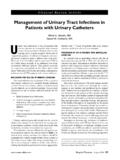

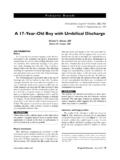
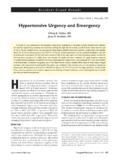
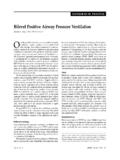

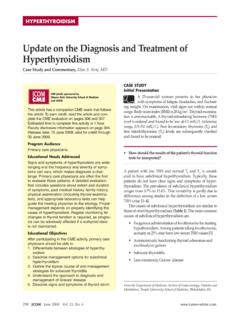

![[Product Monograph Template - Standard] - …](/cache/preview/a/9/a/b/c/6/8/3/thumb-a9abc683523644e52c439669ba6e5b27.jpg)
